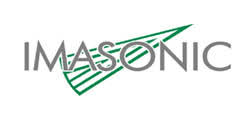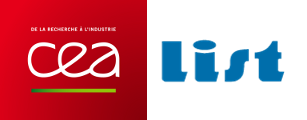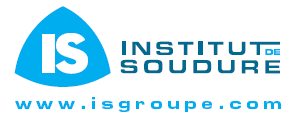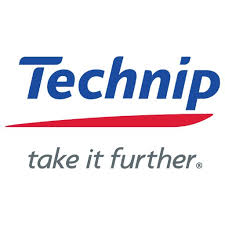
EXTENDE participates in theAADICT project (Automation and Aid in Diagnostic for Non Destructive Testings) supported by the FUI, which funds collaborative research and development projects (R & D), labeled by the competitiveness clusters. The purpose of the FUI is to support applied research projects on the development of products, processes or services that may be placed on the market in the short to medium term, usually 5 years.
AADICT is a project labeled 
The project covers 30 months (January 2017 to June 2019) and represents an investment budget of € 3,900,000.
The project is supported up to € 1,400,000.
Objective of the project
Industrial safety requirements require non-destructive testing (NDT) increasingly reliable and fast at all stages of a product's life, from production to maintenance.
Inspection and control methods have benefited from the development of digital tools these recent years and are experiencing significant growth. Among the non-destructive testing methods, phased-array ultrasonic methods are of great interest because of the many imaging capabilities they generate and the associated productivity increases. In addition, powerful simulation tools have been developed and are used worldwide in the field of NDT.
The AADICT project is in this context of innovative uses of digital tools, in order to propose integrated means of diagnosis, for manual or automated control operations. The objective is to assist the inspector in his tasks, respecting the usages (adapted control procedures, operator expertise) while adding new functionalities such as the automation of defect characterization methods. In other words, the main aim of this project is to improve the reliability of the control results, to characterize the defects and to increase the productivity of the NDT.
The actors of the ADDICT project
M2M
M2M develops, designs and sells phased-array systems for non-destructive testing (NDT) by ultrasound (UT). Founded in 2003, M2M is today a company of nearly 45 people highly qualified in electronics, software engineering, CND, with 800 systems used in 16 countries.
In ten years, M2M has developed a range of products ranging from massively parallel systems (256 channels: Multi ++) to portables such as the Gekko, which combines advanced electronics with software allowing visualization, acquisition and data processing.
M2M relies on a dozen distributors in the world, and has created three subsidiaries: M2M Brazil, M2M China, M2M USA.
M2M is the project leader, guarantor of the objectives and progress of the main stages of the AADICT project. M2M will also be in charge of developments related to the connection of tools developed for fast acquisition, automated interpretation.
These developments will be associated in the form of modules to the phased-array instrumentation of the company M2M, Gekko and Multi ++, for NDT operations.
EXTENDE
 Founded at the end of 2009, EXTENDE's mission is to bring the benefits of NDT simulation and development methodology to companies in the field. EXTENDE wants to participate in the reliability and optimization of NDT performance in order to improve the competitiveness of corporate customers. EXTENDE is the exclusive distributor of the CIVA software platform developed by CEA LIST.
Founded at the end of 2009, EXTENDE's mission is to bring the benefits of NDT simulation and development methodology to companies in the field. EXTENDE wants to participate in the reliability and optimization of NDT performance in order to improve the competitiveness of corporate customers. EXTENDE is the exclusive distributor of the CIVA software platform developed by CEA LIST.
This offer is accompanied by a service offering including CIVA technical support, software training, simulation studies and NDT consulting through technical assistance available at various stages of the development and implementation of a NDT process.
EXTENDE brings together specialists in CIVA modeling combined with operational and industrial experience, giving it a special legitimacy to embody the link between the world of research and the community of industrial users of modeling codes. Provider of innovations, EXTENDE accompanies the R & D effort deployed around the CIVA platform which is capitalized in this one. An R & D agreement is binding EXTENDE and CEA-LIST. In addition, EXTENDE was a contributor to the ANR MOSAICS project and participated in the MACSIM project.
EXTENDE will actively participate in the validation of the new tools developed during the project. EXTENDE will also ensure the dissemination and valorisation of the deliverables of this project, in particular by promoting and selling the new characterization modules integrated in CIVA Analysis worldwide.
IMASONIC
IMASONIC was founded in Besançon in 1989 and enjoys a favorable environment for an activity that uses microtechniques. Imasonic focuses on the design and manufacture of new ultrasonic transducers for industrial and medical applications. The strategy is focused on tailor-made, with a desire for differentiation through innovation in collaboration with academic and industrial research.
IMASONIC markets products and services aimed at the health or safety of industrial equipment:
- Medical applications emerging in monitoring, therapy, therapy combined with imaging and new modalities in the field of diagnosis (high frequency imaging, photoacoustic ...)
- Industrial applications such as Non-Destructive Testing of Materials and Structures (Power Plants, Petrochemical Plant Engines or Structures ...).
IMASONIC's roles in the project include:
- Simulate application cases against the performance objectives of inspections; Complete the specifications and establish the specifications of the transducers
- Carried out the design of new transducers: fabrication and verification of the perfromances of the prototypes.
SAFRAN
SAFRAN is an industrial and technological group, a major player at the international level in the fields of Aeronautics, Space, Defense and Security. It is specialized in the design of systems and equipment in these areas.
The research and development activities dedicated to all subsidiaries of the group are carried out within SAFRAN TECH. Within the scientific and technological cluster on the Saclay plateau, Safran Tech will welcome 300 researchers and engineers.
R & D activities carried out at SAFRAN TECH feature prominently in Signal Processing, in particular for the automatic sanctioning of non-destructive inspection operations.
SAFRAN intervenes in the AADICT project as an end-user. SAFRAN defines in this project the cases of applications, the inputs and outputs of the checks carried out, the methodologies to be applied.
CEA LIST
The CEA's Systems and Technology Integration Laboratory (LIST) is a technological research center on systems with predominant software, organized according to three themes presenting strong societal and economic stakes: Embedded Systems, Interactive Systems, Sensors and The Signal Processing.
In the area of the NDT, the CEA LIST is one of the major research laboratories at the international level and has considerable expertise. A department of about one hundred people is dedicated to research and development activities around two axes that are the modeling (ultrasound, electromagnetism, radiographic), simulation, and data processing, on the other hand Instrumentation and design of sensors and innovative methods.
In the field of simulation, CEA LIST develops the CIVA simulation platform dedicated to NDT. This software is distributed internationally to academics, research centers and industrialists. There is currently no equivalent software in terms of functionality and speed of calculation.
CEA-LIST is involved in this project as a developer of solutions for reconstruction and automatic diagnosis. It will draw on its expertise in simulation and analysis of NDT, and propose a set of software tools necessary for a reversal process.
A special effort will be devoted to the software architecture to propose these tools in the form of Plug-In integrable in the M2M systems and the associated Analysis tools, guaranteeing rapid evolutions towards new application cases.
INSTITUT DE SOUDURE
THE Institut de Soudure (Welding institute) was founded in 1905 under the name of the Central Office of Acetylene (OCA). Through its technical center, these technological platforms and its two Schools, the Institut de Soudure is at the service of the professional welding and associated controls. Industrialists benefit from this collective structure of multiple R & D resources in standardization and documentation.
The Welding Institute has 3 industrial research and development platforms:
- Assembly Platform: welding and brazing processes, design and metallurgy
- Mechanical and Corrosion Platform: characterization of materials and assemblies
- Non-destructive testing: Definition of non-destructive testing methods for materials and assemblies
In each of these areas, the Welding Institute is equipped with advanced industrial-scale equipment allowing upstream support for developments up to the realization and characterization of large prototypes.
The task of the Wedling Institute will therefore consist in:
- Developing Tools to Improve Classification / Identification
- Developing tools to help improving height sizing
EDF
EDF R&D laboratories have long been carrying out projects in the area of NDT in order to assess, ensure and improve the performance of the controls implemented on the nuclear power plant. The MMC (Materials and Mechanics of Components) department has important competences in the fields of NDT and materials science, while the SINETICS department (Neutron Simulation Information and Scientific Computing) develops various codes in the field of NDT, including the ATHENA finite element code for ultrasonic testing.
EDF intervenes on the one hand in the upstream phase for the definition of relevant industrial cases and then downstream for the experimental validation. The NDT laboratory at MMC puts its acquisition resources to the benefit of the project, and also contributes with mock-ups for the validation phase.
COMEX
Created in 1990, COMEX NUCLEAIRE (CxN) has been part of the ONET TECHNOLOGIES division of the ONET group since 1999. It develops innovative solutions for engineering and complex industrial interventions. CxN is a company with more than 500 employees, 90 of whom are COFREND certified, experienced in the development, qualification and implementation of NDT / END processes in the nuclear and petrochemical industry, and an expert level III for complex operations.
The NDT / END department of CxN has a platform dedicated to the design and development of methods, tools and solutions END in AUT, TOFD, Phased Array, multi frequency Eddy Currents ... and participates in working groups on NDT standardization. CxN conducts R&D studies in NDT, particularly on corrosion characterization themes at the right of welds by ATFM, expertise and characterization of defects by TFM, or the problems of RT / UT switchover.
CxN will be involved at the beginning of the project, in the specification definition phase and in an industrial case study (WP0). Based on its expertise and REX in TFM reconstruction methods and defect characterization, CxN will participate in the work of WP2 for the definition of fault characterization methodology. CxN will also participate in the validation of the developed tools (WP5), by carrying out experimental tests on models representative of the defined case study.
TECHNIP
Technip is a world leader in project management, engineering and construction for the oil and gas industry.
Its main markets include onshore facilities (refining, petrochemicals, gas processing), offshore platforms (Spar, TLP, Semi-Sub, FLNG) and subsea construction (submarine pipe installation).
In 2013, Technip opened the Center for Innovation and Technology (CIT) in Rueil-Malmaison near Paris. Its main mission is to coordinate and consolidate the efforts of the various R & D centers around the world. The CIT offers an accompaniment for the development of R & D very advanced since it created, at the beginning of 2016, its own experimental platform of development of Non Destructive Testings. This platform makes available inspection equipment similar to those used on manufacturing sites, and thus allows upstream validation of new NDT technologies and their implementation during operations.
Technip is involved in this project as an end-user. Technip defines in this project the cases of applications, the inputs and outputs of the checks carried out, the methodologies to be applied.
The stages of the ADDICT project
WP0 : Specifications, case studies
Leader : M2M
Goals : Definition of some case studies
WP1 : Integrated electronics in transducers
Leader : Imasonic
Goals : Embedded in the case of an ultrasonic phased-array probe an electronic system that will allow it to increase its performance in terms of sensitivity and signal-to-noise ratio.
WP2 : Characterization methods
Leader : Institut de Soudure
Goals : Detailing algorithms to be integrated that must allow standard and advanced methods to produce diagnostic help for operators
WP3 : Inversion and reconstruction
Leader : CEA LIST
Goals : This subproject aims to trace directly the characteristics of a defect (position, dimension, volumetric nature / plane ...) from the signal or from an image measured experimentally and based on data from the simulation.
The subproject will consist on evaluating algorithms and software components for the inversion of ultrasonic data. These software components will be integrated into the WP5's systems and will be compatible with real-time use as well as time-delayed use on remote analysis software. The algorithms used will rely on the capabilities of simulation and processing of ultrasonic data developed in the CIVA platform and for optimal performance, will exploit digital databases dedicated to the cases of applications targeted by the project.
WP4 : Integration, automation and visualization
Leader : M2M
Goals : This subproject consists on developing and integrating new software products for the automatic diagnosis of non-destructive testing. The idea here is to develop tools that will present to the user a "turnkey" environment dedicated to a family of controls defined from the domain of applicability of the algorithms developed in the WP2 or from the database and the Metamodel provided as input (WP3).
WP5 : Validation
Leader : EXTENDE
Goals : Validate the various modules developed within the framework of the project.







